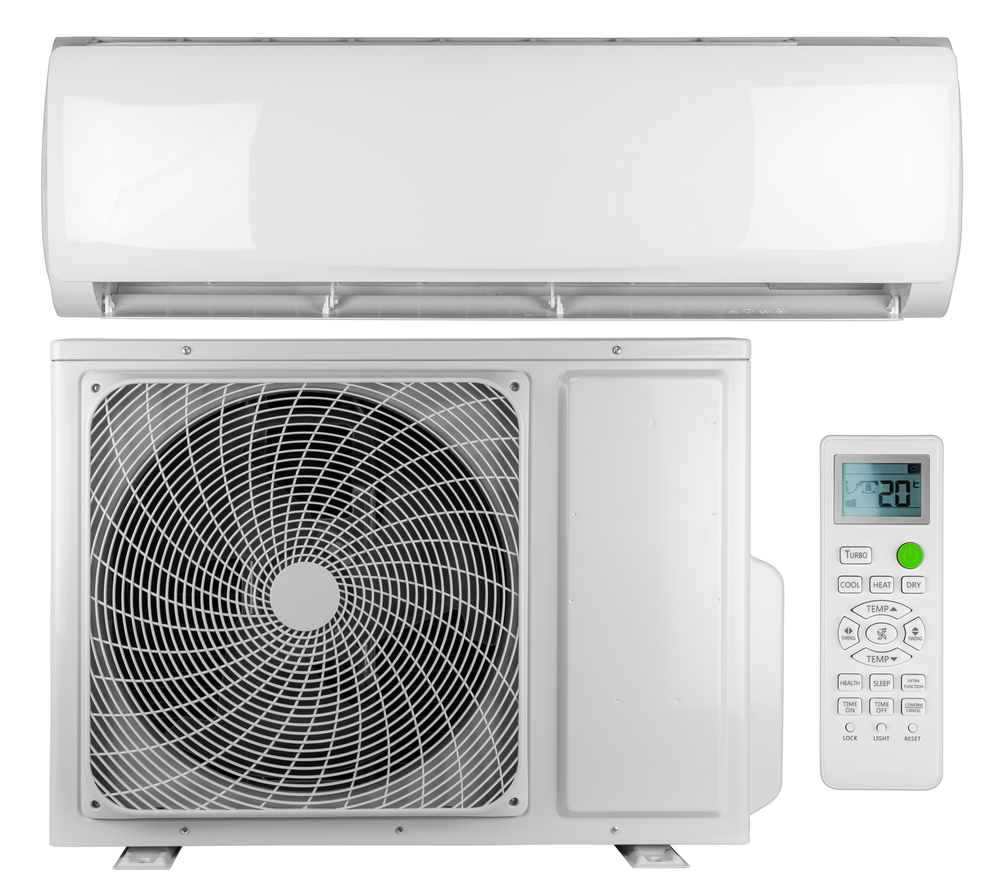Though there is little difference in the physical way different kinds of air conditioners function to cool the air, there are many kinds of AC units. Each of these bring their own strengths and benefits to the table depending on what the situation demands.  For large commercial buildings, for example, package systems that combine heating and cooling into one large unit are often the most cost-effective choice. For typical homes, ducted air conditioning is the way to go, because the infrastructure is already there. What about so-called “ductless” units, though? How does a mini-split air conditioner work, and when is it the right choice for your home?
For large commercial buildings, for example, package systems that combine heating and cooling into one large unit are often the most cost-effective choice. For typical homes, ducted air conditioning is the way to go, because the infrastructure is already there. What about so-called “ductless” units, though? How does a mini-split air conditioner work, and when is it the right choice for your home?
The Basics of Mini-Split Operation
The main difference between a mini-split air conditioner and other common types, such as the regular split system, is that it does not use any ducting. Mini-splits use an outdoor unit just like typical air conditioners, running a compressor to circulate refrigerant through the system. Instead of connecting to a central unit that distributes cooled air to the entire structure, the mini-split’s indoor unit attaches directly to the wall in one room. Thus, it can provide effective and ample cooling for a single space, but it does not cool the entire home. Some mini-split systems can connect multiple indoor room units to one outdoor compressor, providing a more versatile system. Aside from these fundamental differences, mini-splits operate identically to other systems.
How Does a Mini Split Air Conditioner Work in Comparison to Other Options?
Why would you want a mini-split system? A home or business that lacks central ducting, as some mobile homes do, would be one reason. You may also want to provide cooling to a specific room without the need to connect the space to existing ductwork. Since you don’t need to run a larger system that must cool the whole home, you can make a smaller space more comfortable in less time. What about energy consumption? How does a mini-split air conditioner work in this regard?
The good news: mini-splits stack up well against their bigger cousins. Because they don’t need to work as hard, they’re able to make better use of the electricity they consume to run the refrigeration cycle. The result is a higher SEER than many central air conditioners, and advances from major manufacturers such as Fujitsu continue to push the boundaries of mini-split efficiency.
The Drawbacks to Using a Mini-Split Unit
Although these units offer many potential benefits, are there any drawbacks to consider before you call up your contractor and let them know you want to switch to a mini-split? There are a few pitfalls to know about ahead of time.
First, mini-splits tend to have a higher up-front cost, especially compared to traditional area cooling options such as window-mounted units. A home or business owner who chooses to replace a ducted system with mini-splits for each room could expect to pay a substantial amount more than other solutions. However, energy savings may contribute to offsetting this difference. Second, some find the maintenance (described below) to be a burdensome process, more so than with central air units.
Finally, you may find that the aesthetics of the mini-split aren’t to your liking. They must mount directly to the wall, and to some, they represent a visual intrusion into their space. Weigh each of these considerations carefully when you look at mini-splits.
How Do You Maintain One of These Units?
Every unit will have maintenance requirements of their own, but cleaning the unit’s filter is by far the most important step. Split system filters can clog up quickly, and you should plan to remove and wash them every month. If left unchecked, you can put excessive strain on your unit, leading to an early failure. There may be other components you can remove and wash as well, but if there are, you should aim to stick to a strict schedule to avoid unnecessary wear and tear. As always, annual maintenance is a good idea, too.
Installing a Mini-Split in Your Home or Business
Although they may not be perfectly suited to every application, this type of unit has plenty of unique strengths that make it a viable alternative to a ducted system in many cases. Now that you know the answer to the question “how does a mini-split air conditioner work?” you may wonder what to do if you’d like to add one to your space. Because installing the unit will require making some modifications to the room requiring cooling, it’s important to select a licensed and experienced contractor to handle the job. The same is true if you’d like to explore alternative heating solutions with the same technology.
Ensure that you also have professional insight into properly sizing the unit. Just as with a central air unit, a unit too small or too large for the space can cause a host of different problems. Your service provider should provide you with access to industry-leading options in efficiency, sized appropriately to match your space. With mini-splits, cost-effective cooling is much more accessible.
